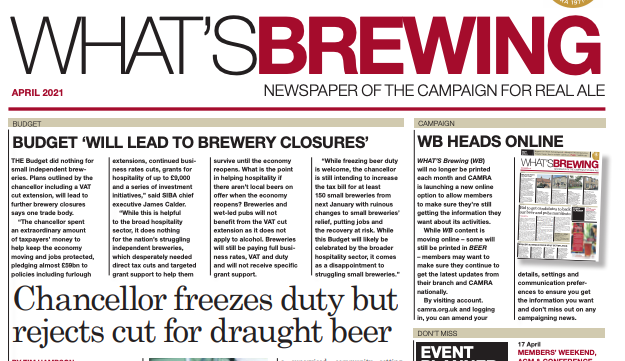In Nitro We Trust?
Audio Description
Login here to listen to the audio description

I was surprised to learn that Guinness is now the most popular pint pulled in British pubs. Outstripping the value of sales of Carling for the first time (although not the volume), the Daily Mail attributed the dry Irish stout’s success to a boost in sales enjoyed during the World Cup.
I’m probably not alone in having Guinness as my ‘stand-by’ pint when I find myself trapped behind enemy lines, in a pub with no cask ale or decent craft beer. It’s a known quantity with consistency on its side - although there are enough #BadGuinness posts on Instagram to warn against a lackadaisical pour.
Dark beer is enjoying a renaissance. Drinkers in the capital looking for an independently and locally brewed alternative are turning to Anspach & Hobday’s London Black. The nitro porter is served at more than 100 outlets in London and is the brewery's most popular beer, accounting for 65 per cent of its production.
Meanwhile, Melton Mowbray’s Round Corner Brewing has experienced unprecedented success with Reverend Hooker nitro stout. It was first brewed as a seasonal, but after becoming one of its top three best sellers, the Reverend now has a spot in the core range.
Guinness hired mathematician-turned-brewer Michael Ash to investigate ways of improving the quality of its beer. Ash experimented with different methods of dispense, heading up the team of scientists that innovated with nitrogen gas in 1959.
Using nitrogen at the point of dispense gives a smoother, creamier mouthfeel. The gas is less soluble in liquid than carbon dioxide and creates smaller bubbles. The texture of the nitrogen-infused stout set Guinness apart from other breweries.
In the 1980s, Guinness was one of the first to replicate the experience of drinking its draught product in a can. Widgets release nitrogen gas when the can is opened. The surge of bubbles mixes with the beer to create the signature creamy texture.
There is nothing quite like the theatre of ordering a pint of dark nitro beer. The small nitrogen bubbles rush downwards and ultimately escape up the side of the glass, creating a beautiful cascade effect. Guinness, the masters of brain-invading branding, call it the “surge and settle effect”. A double pour is used to release more nitrogen, enhancing the creaminess of the head. Pouring the beer in two stages also heightens your anticipation. Good things come to those who wait, or so we are told.
But does it really make a difference, or is the double pour just smoke and mirrors? I wait impatiently for my pint of Reverend Hooker nitro stout to settle at the jovial Round Corner Brewing taproom.
“The two-part pour is used to better control the appearance of the foam, creating a smoother, creamier head that is just the right size,” lead brewer Lara Lopes tells me. “If poured incorrectly, you can get larger, glassier bubbles and/or a head that is too big or too small.”
In 2013 it was a gutsy move for Anspach & Hobday to launch its brewery with a brown ale and a porter headlining. While the marketplace was awash with hoppy pales, Paul and Jack bet the farm on a modern approach to historical styles, wrapped in a distinctly local story. Just like the London brewers of old, they capitalised on the composition of the water to create unforgettable dark beers.
Over lockdown, they perfected a sessionable nitro version of their original porter using modern technology to elevate the distinguished heritage style and “make keg porter pour smooth like cask draught” according to co-founder Jack Hobday. London Black (below) was born.
Packaged in branding as smooth as the beer itself, London Black has found its niche. Anspach & Hobday is the first contemporary brewer to put a London porter out as its lead brand. It enjoys a permanent home in nearly 200 pubs and restaurants nationwide, more than half in London.
“We believe drinkers really care about provenance and are moving away from the world of global macro brands,” Jack tells me. “We’re not trying to supplant Guinness or any other beer, we’re simply offering a genuine London choice that celebrates our shared history.”
The recent launch of CAMRA’s Good Beer Yearbook was held at the Arch House, the Anspach & Hobday brewery and tap on the Bermondsey Beer Mile. I watched some of the country’s most celebrated beer writers file up to the bar and all, independently, order London Black. No one was immune to its twice-poured charms. Industry leaders like Emma Inch, Pete Brown and Roger Protz all raised a swirling glass of chocolatey porter to the new publication.
“London Black represents a certain level of maturity I feel has been lacking within the new wave of British brewing,” says Matthew Curtis, author of Modern British Beer. “It is very delicious, but not too complex or overbearing, striking the perfect balance between flavour and refreshment.”


 view archive
view archive
 view events
view events